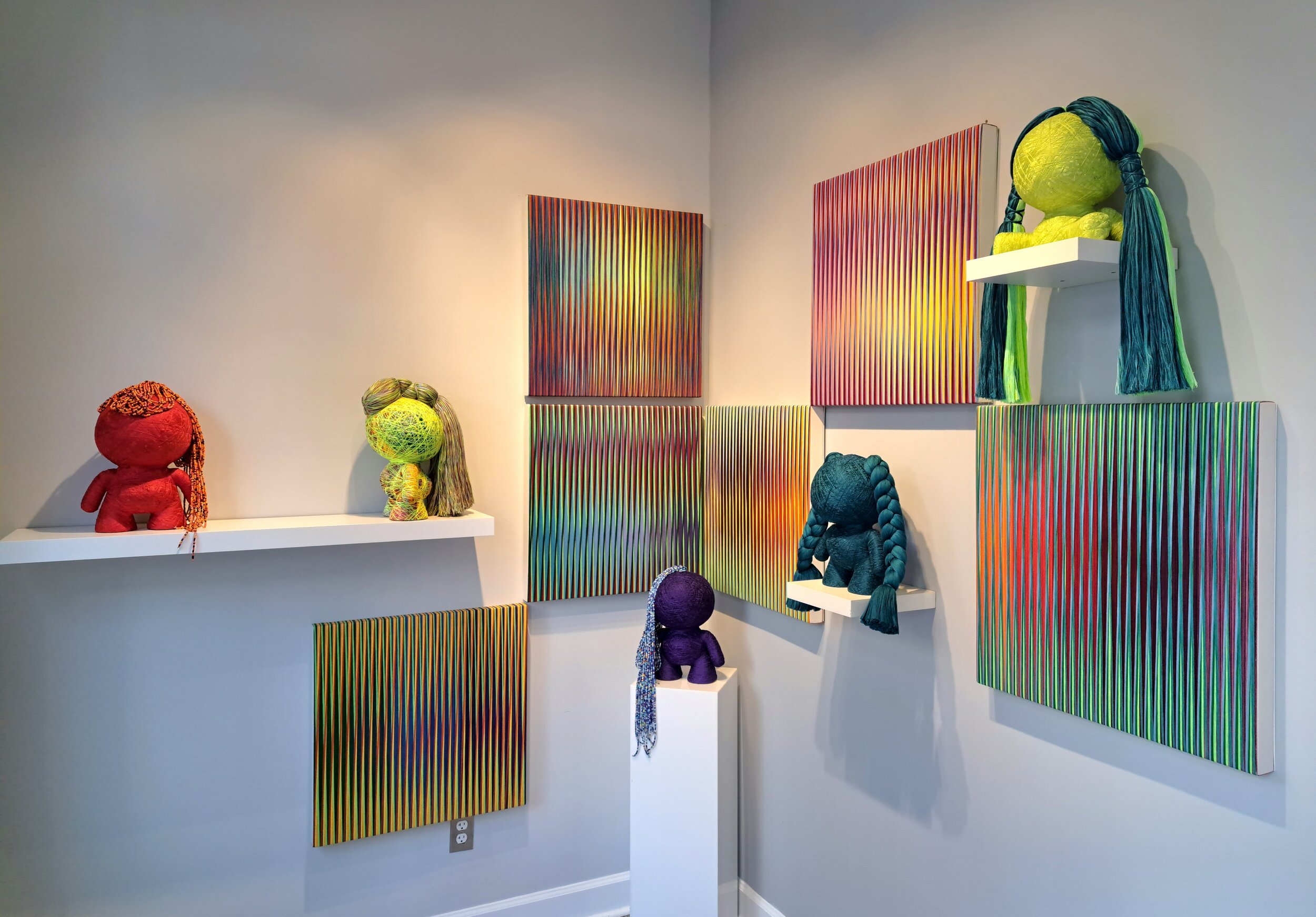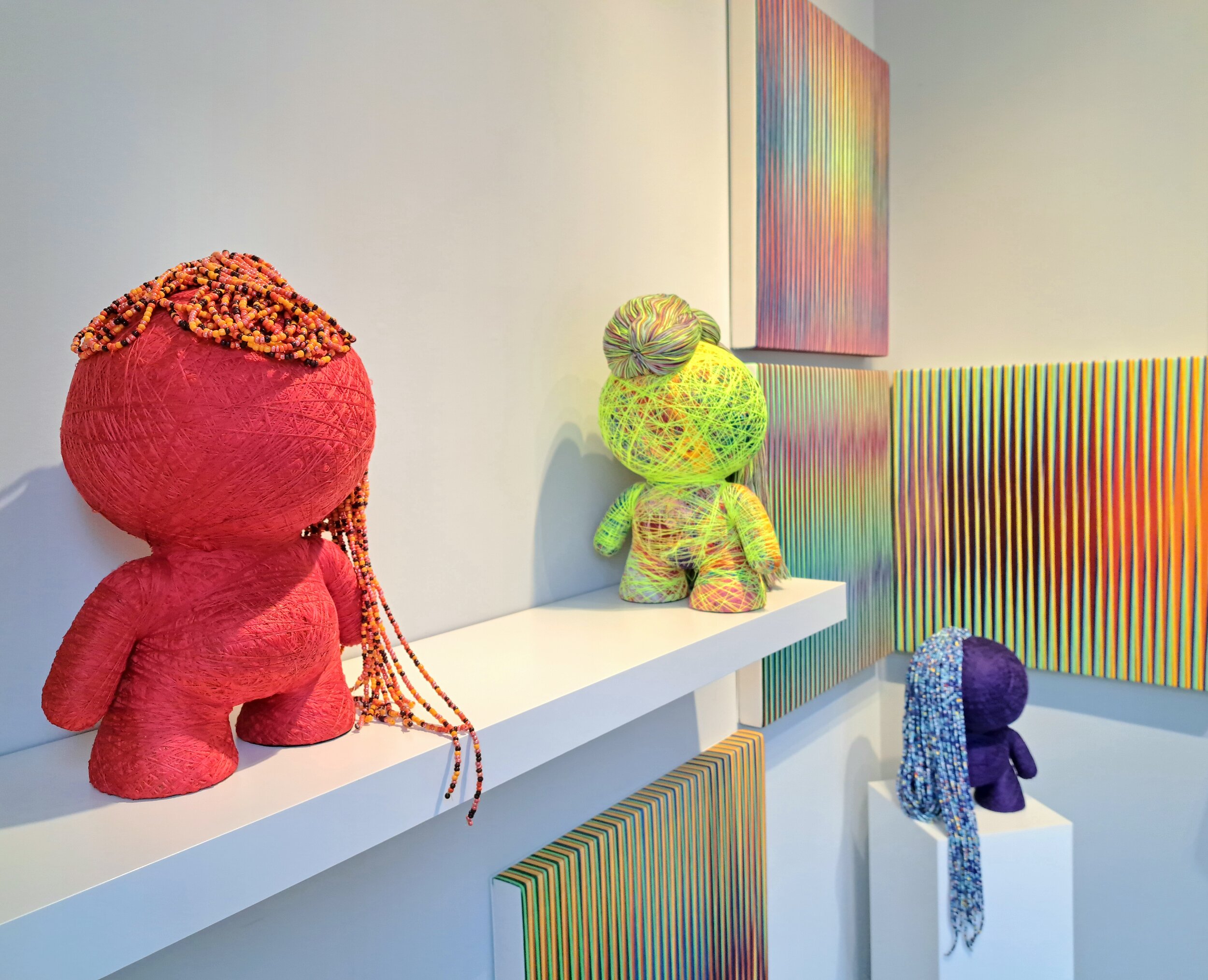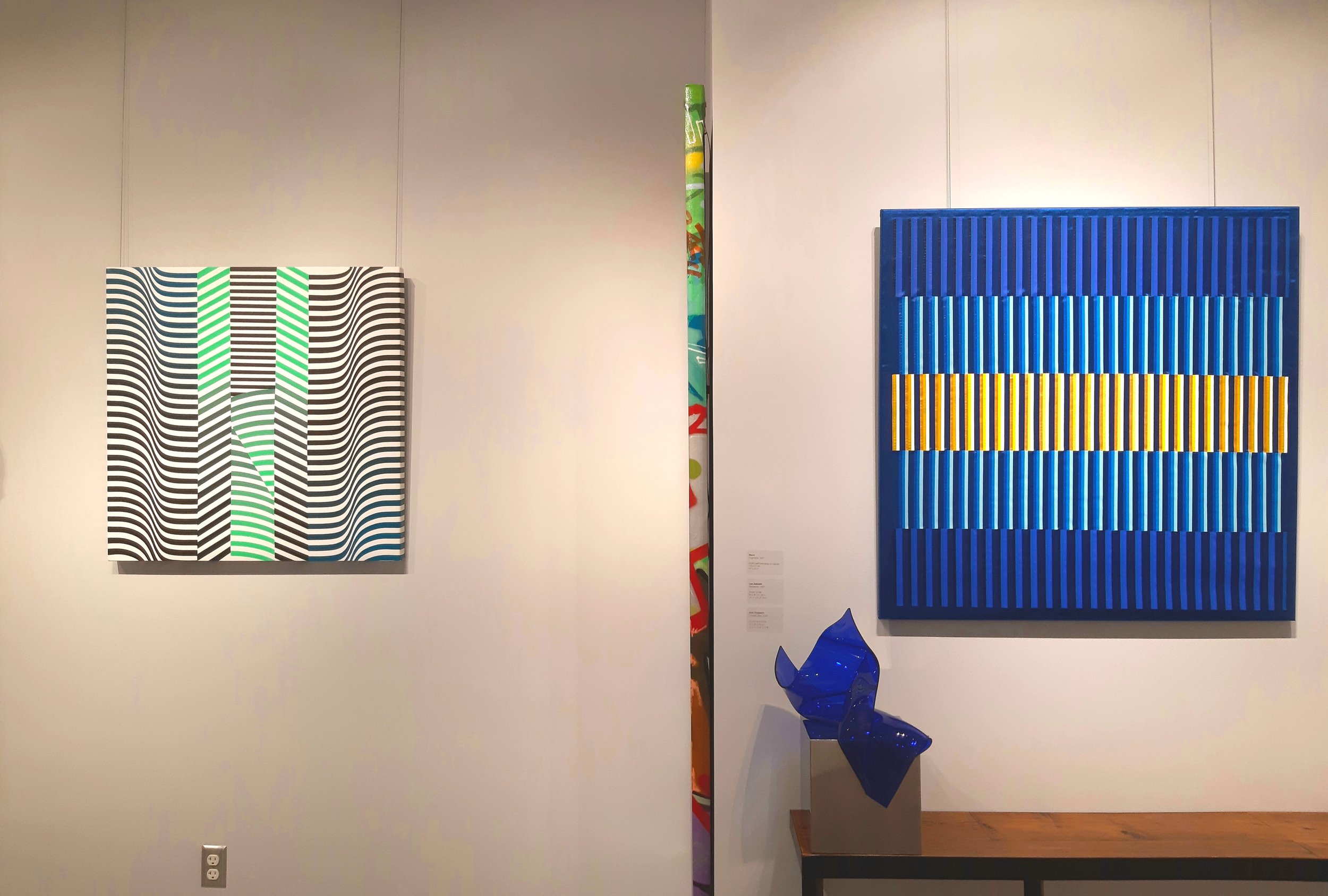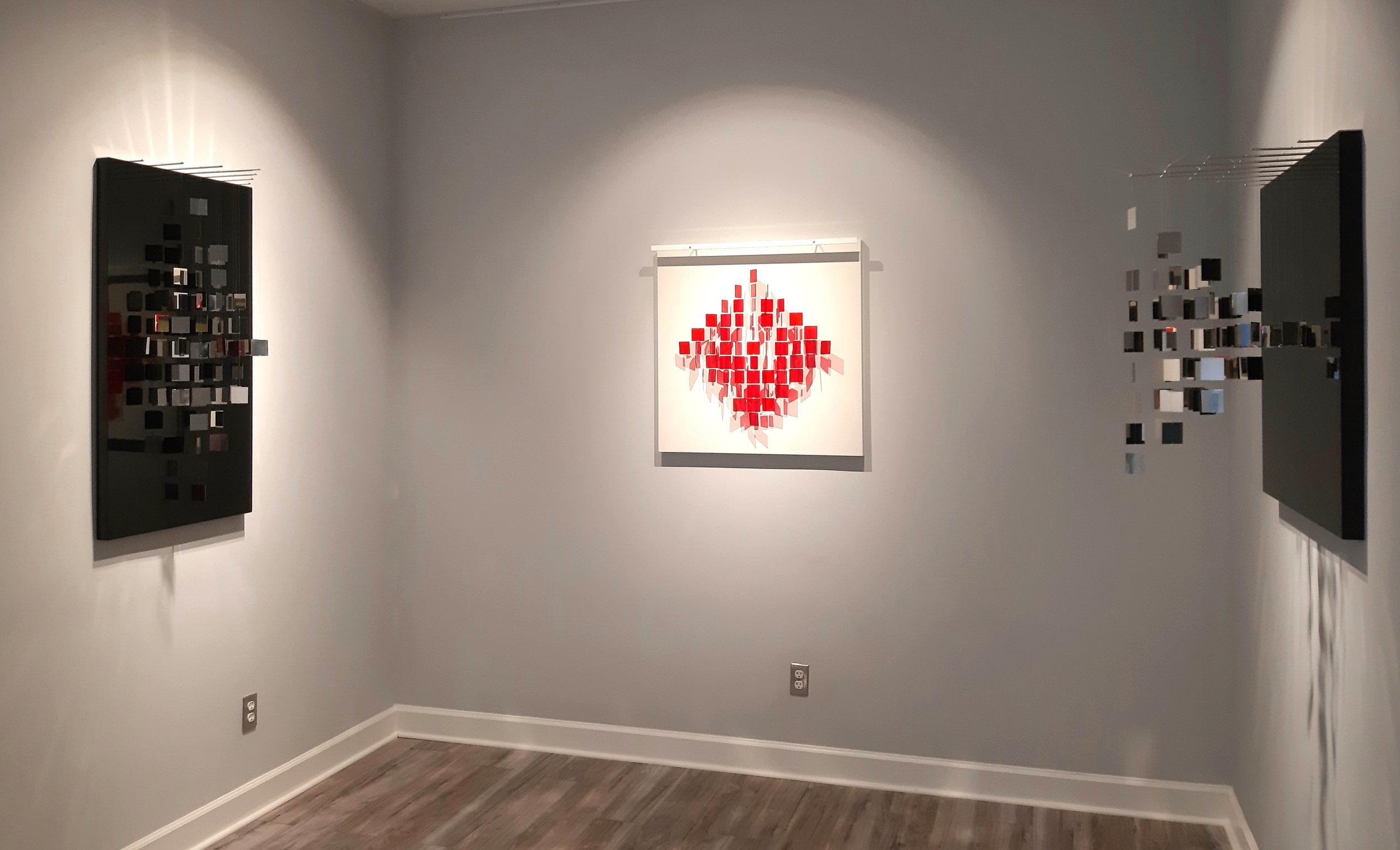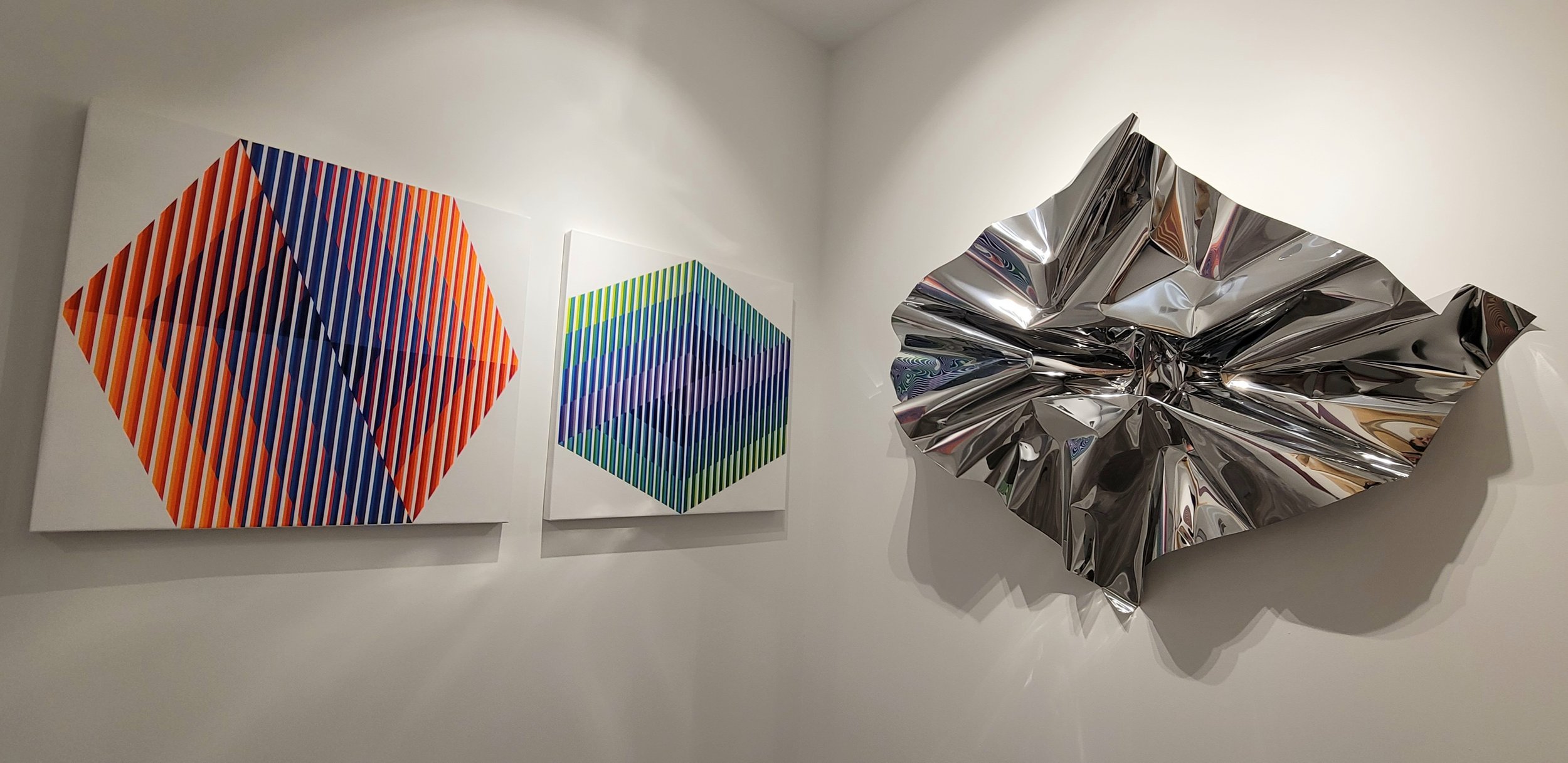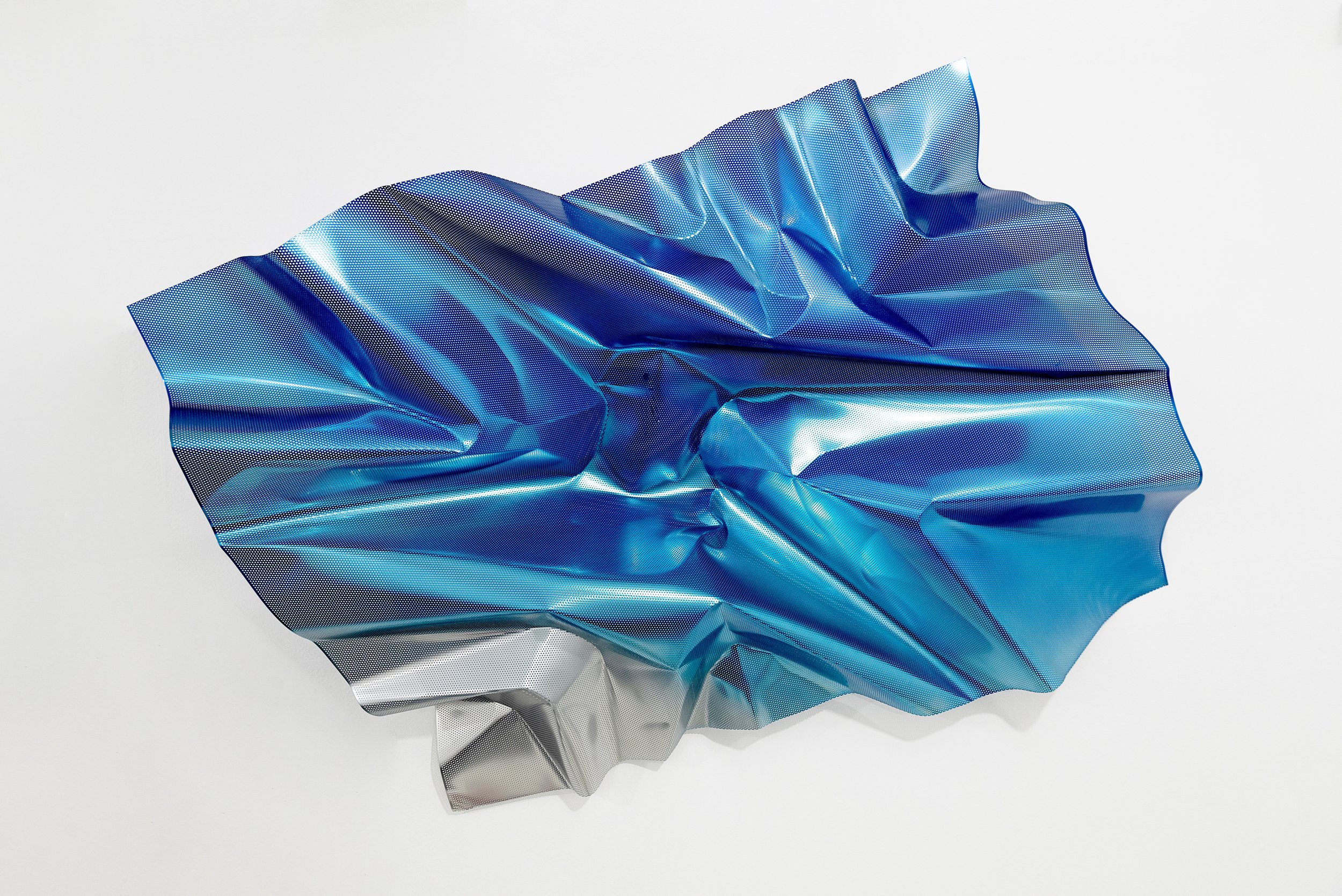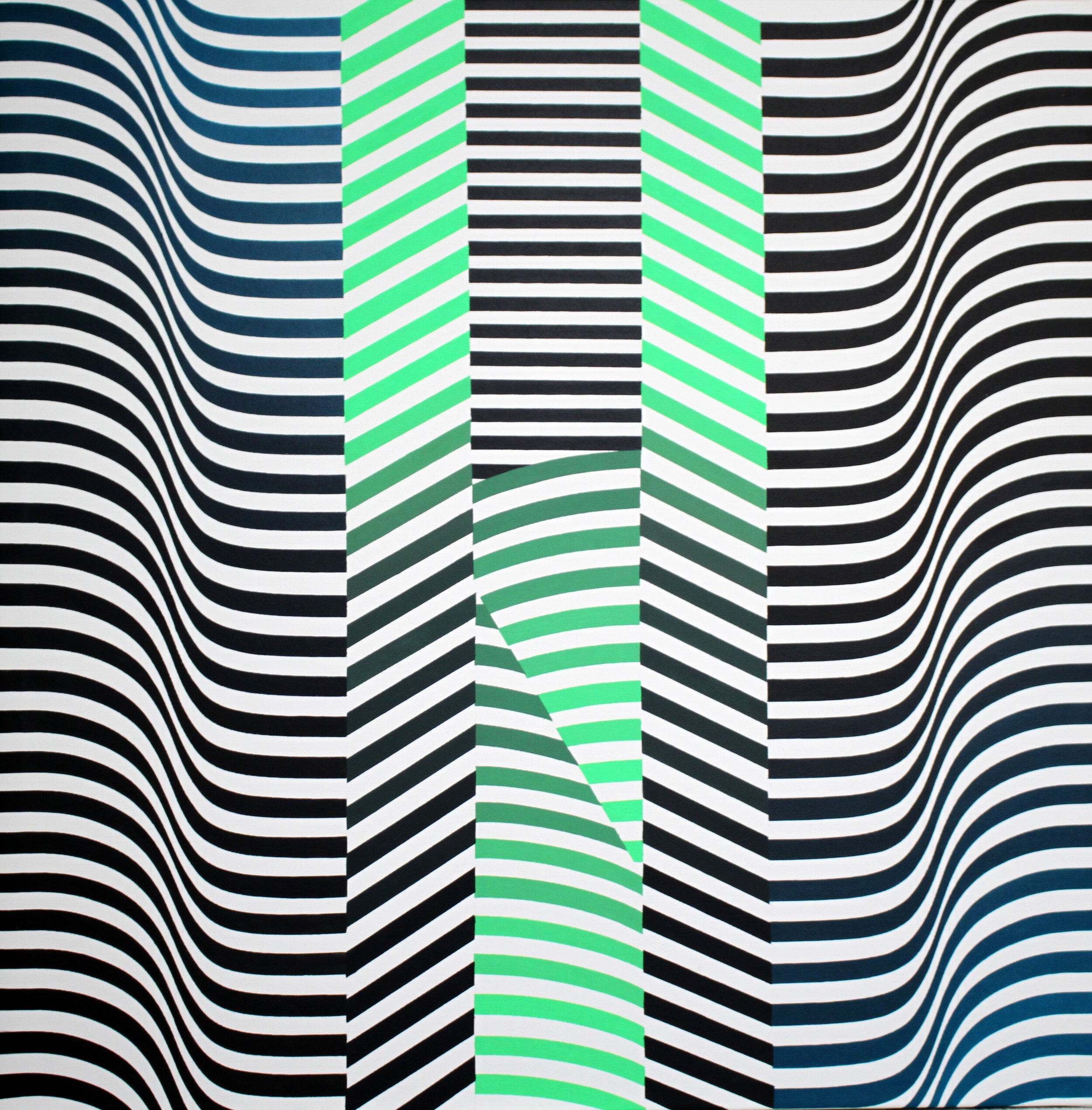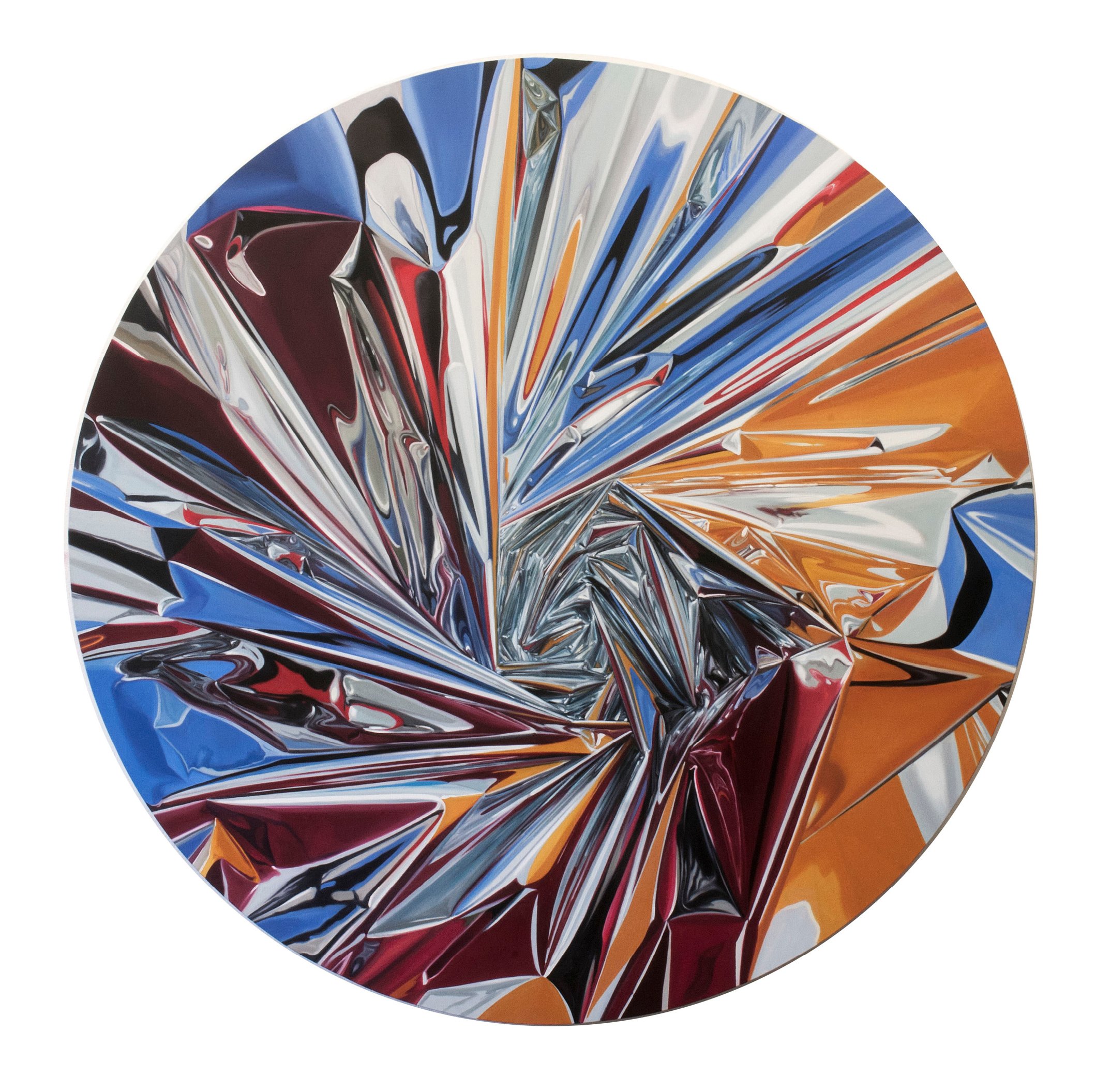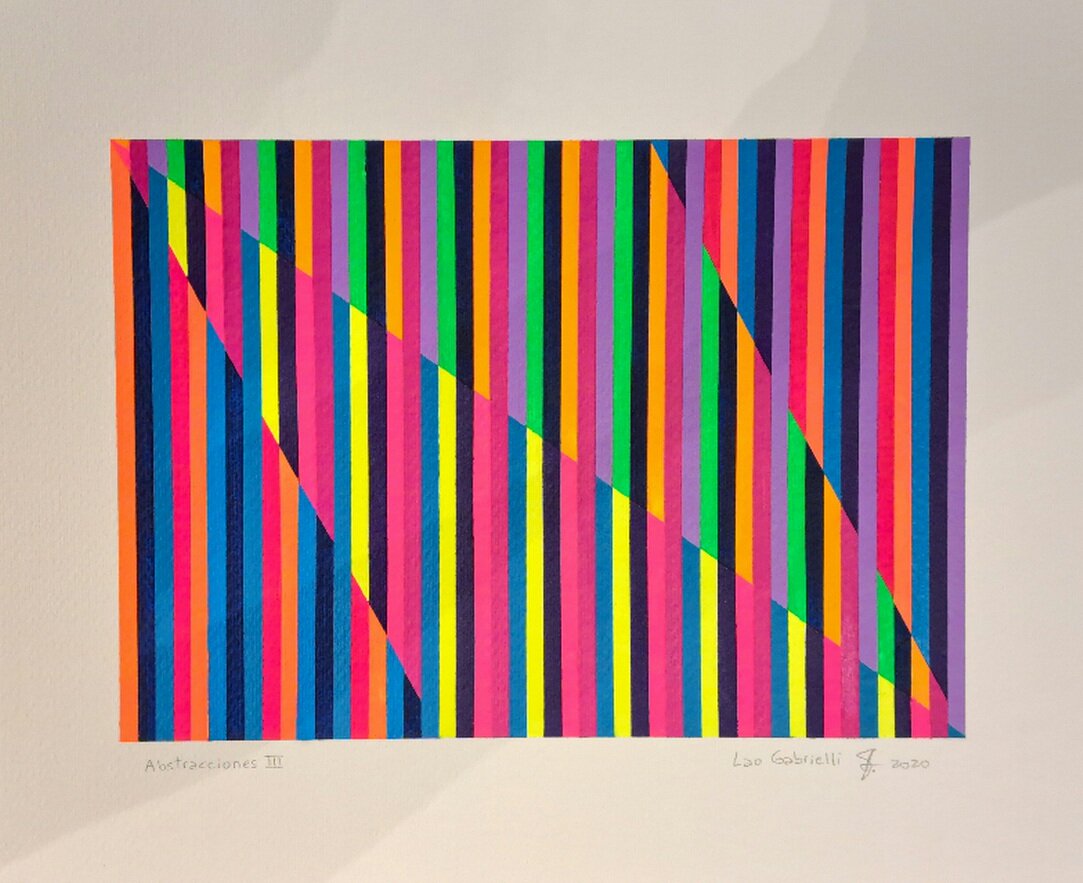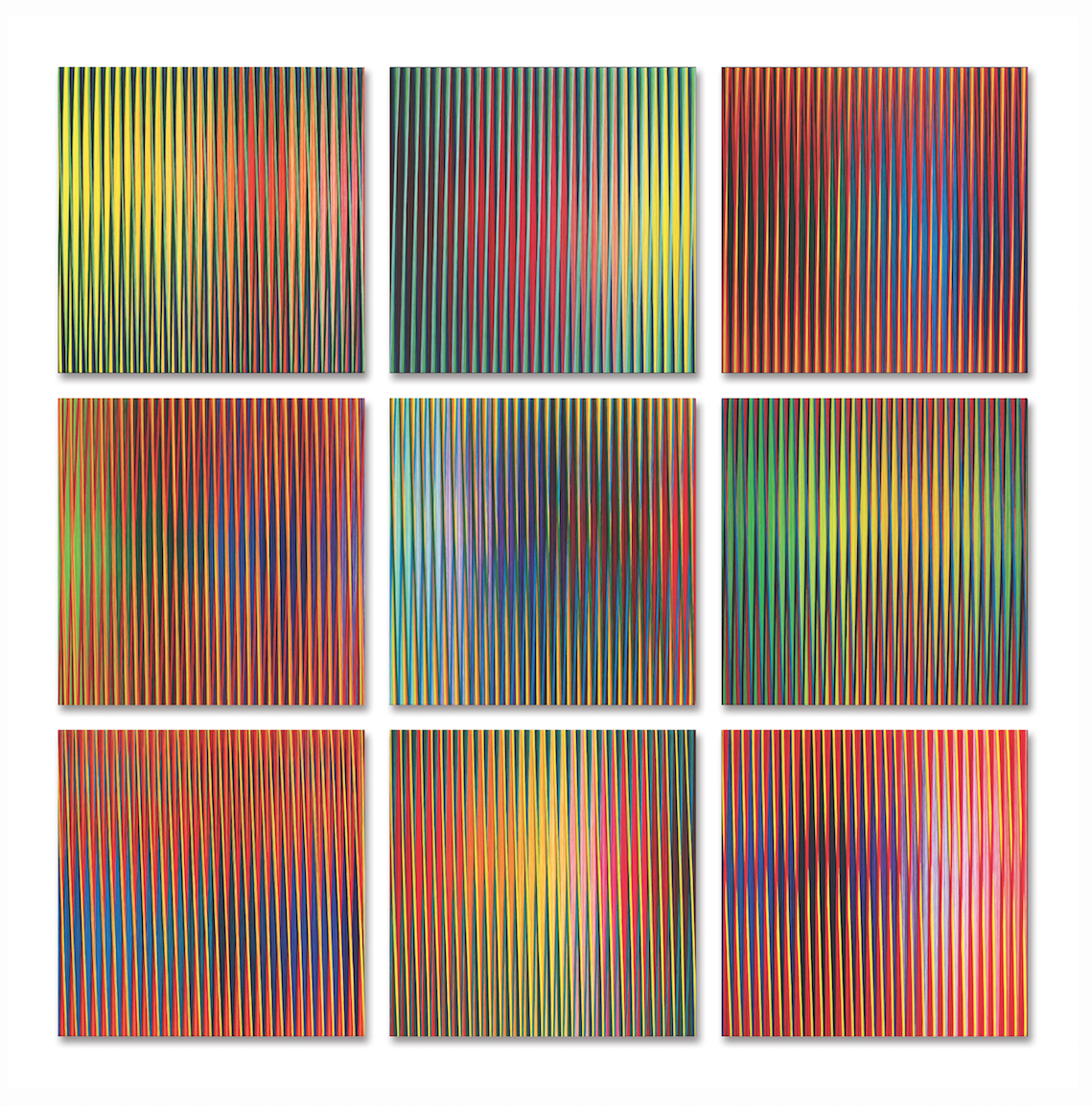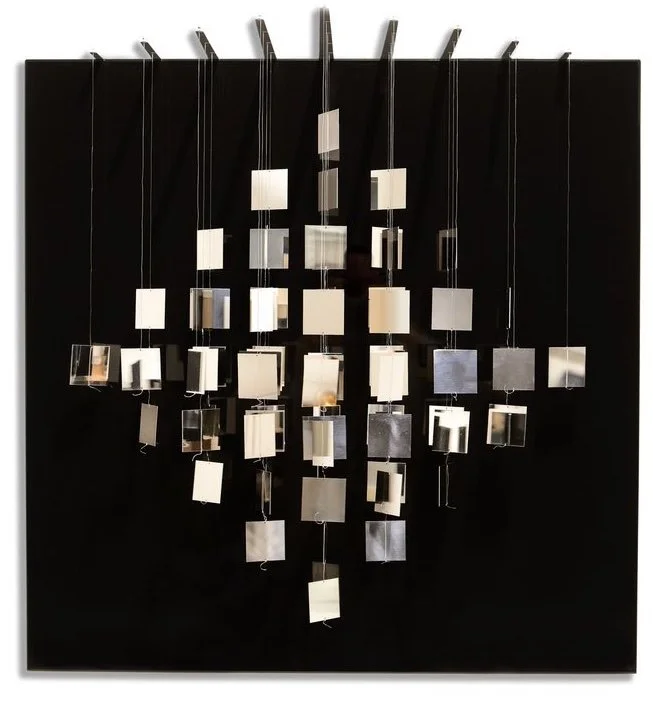Impure Geometries
Geometrías Impuras
Together with - En colaboración con - RoFa Projects
Aldo Chaparro, Cristina Ghetti, Javier Peláez, Julio Le Parc, Lao Gabrielli & Reymond Romero
Impure Geometries
Impure Geometries presents the legacy of Geometric Abstraction in Latin America, established between 1940 and 1970, by showcasing geometry-inspired artwork by contemporary artists from the US and Latin America. The exhibition highlights the figure of Julio Le Parc as one of the great forerunners of the 20th century and shows the creation and evolution of abstraction by the new generations of artists in Latin America.
Latin American Geometric Abstraction was initiated by the painter Joaquín Torres-García and then, starting in the 1940s, a significant number of artists from Argentina, Brazil, Uruguay and Venezuela followed his example.
The presence of Latin American artists in Europe and the influx of European artists into Latin America was key in the rise of geometric abstraction. Carlos Raul Villanueva in Caracas was undoubtedly one of the great forgers of this movement, in which Arp, Leger, Calder, Otero, among others, participated. In 1960 Le Parc created his first Mobile and already in 1966 he won the Gold Lion at the Venice Biennale. In 1965 the MOMA presented The Responsive Eye and in 1967 Soto created his first penetrable!
Impure Geometries examines contemporary Latin American artists who pay tribute to these great forerunners with their work. Movement and artists in constant reaffirmation and interrogation of the still evolving role of abstraction.
Within this modernist tradition, Julio Le Parc (Argentina, 1928) is one of the most recognized figures in the field of research and experimental visual arts focused on modern Op-art and Kinetic art. To understand the work of Le Parc it is important to move away from the notion of a stable, unique and definitive work. For the artist, "the multiple variety of situations in the same experience" are fundamental in his work, since its aim is to give prominence to the viewer at the center of a phenomenon.
As well as Le Parc, Aldo Chaparro (Peru, 1965) uses materials from the industrial era, such as wood or steel sheets, a material that he transforms into an artistic object using his body and weight to bend and mold it. Chaparro explores form through the void, matter and the human body through rapid processes to transform prefabricated materials into unique objects. Using elements commonly used for construction, he creates forms in balance by manipulating and subtracting matter.
Javier Peláez (Mexico, 1976) is a virtuoso painter with a “realistic” approach to painting, who over the years has developed a body of work that explores the limits of reality. From an analytical perspective, his recent work considers the semantic possibilities of painting to reconfigure elements of reality, presenting them in a field in which they become uncertain and oscillate between figuration and abstraction.
The influence of Venezuelan Kinetic Art is undeniable in the works of Reymond Romero (Venezuela, 1979). Romero develops his work through the use of textiles. Overlapping and intertwined threads produce different colors and three-dimensionality according to the location of the viewer.
Two Argentinian women adhere to solid, angular geometries. The influence of the Visual Art Research Group -GRAV- (founded by Julio Le Parc and Francisco Sobrino in 1960) is key in the works of Lao Gabrielli (Argentina, 1971). In the artist's work, the lines are altered, accelerating their movement through symmetrical and precise sequences and chromatic variations that expand the pictorial object to two or more dimensions.
For Cristina Ghetti (Argentina, 1969), the re-contextualization of the Argentine Art of the 60's is also fundamental. The artist incorporates ideas from Abstraction, connecting them with forms and ideas from different artistic periods, such as Op Art and Kinetic Art, incorporating digital and traditional media.
Impure Geometries brings together 6 contemporary Latin American artists, committed to the hybrid language of abstraction of our times based on the most powerful modernist tradition in Latin America. The presence of this tradition and its visual codes evidence the universality of their works.
Daniela Camero Rosso and Gabriela Rosso
…………………….
Geometrías Impuras
Geometrías Impuras presenta el legado de la Abstracción Geométrica en América Latina, establecida entre 1940 y 1970, al exhibir obras de arte inspiradas en la geometría de artistas contemporáneos de los EE. UU. y América Latina. La exposición destaca la figura de Julio Le Parc como uno de los grandes precursores del siglo XX y muestra la creación y evolución de la abstracción de las nuevas generaciones de artistas de América Latina.
La Abstracción Geométrica Latinoamericana fue iniciada por el pintor Joaquín Torres-García y luego a partir de la décadas de 1940 un número importante de artistas de Argentina, Brasil, Uruguay y Venezuela siguieron su ejemplo.
La presencia de artistas latinoamericanos en Europa y la afluencia de artistas europeos hacia América Latina fue clave en el surgimiento de la abstracción geométrica. Carlos Raul Villanueva en Caracas, sin duda fue uno de los grandes forjadores de este movimiento, del que participaron Arp, Leger, Calder, Otero, entre otros. En el año de 1960 Le Parc creaba su primer Mobile y ya en 1966 ganaba el León de Pro en la Bienal de Venecia . En 1965 el MOMA presentaba The Responsive Eye y en 1967 Soto creaba su primer penetrable!
Geometrías Impuras examina artistas latinoamericanos contemporáneos que rinden tributo con su trabajo a estos grandes precursores. Movimiento y artistas en constante reafirmación e interrogación del papel aun en evolución de la abstracción.
Dentro de esta tradición modernista Julio Le Parc (Argentina, 1928) es una de las figuras más reconocidas en el campo de la investigación y las artes visuales experimentales centradas en el Op-art moderno y el arte Cinético. Para entender la obra de Le Parc es importante alejarnos de la noción de obra estable, única y definitiva. Para el artista “la múltiple variedad de situaciones en una misma experiencia” son fundamentales en su obra, puesto que su fin dar protagonismo al espectador en el centro de un fenómeno.
Así como Le Parc, Aldo Chaparro (Perú, 1965) usa materiales de la era industrial, como pueden ser maderas o láminas de acero, material que transforma en un objeto artístico haciendo uso de su cuerpo y su peso para doblarlo y moldearlo. Chaparro explora la forma a través del vacío, la materia y el cuerpo humano mediante procesos rápidos para transformar materiales prefabricados en objetos únicos. Usando elementos comúnmente utilizados para la construcción, crea formas en equilibrio manipulando y sustrayendo materia.
Javier Peláez (México, 1976) es un pintor virtuoso con un acercamiento “realista” hacia la pintura, que durante los años ha desarrollado un cuerpo de trabajo que explora los límites de la realidad. Desde una perspectiva analítica, su obra reciente considera las posibilidades semánticas de la pintura para re-configurar elementos de la realidad, presentándolos en un campo en el cual se vuelven inciertos y oscilan entre la figuración y la abstracción.
La influencia del Arte Cinético Venezolano es innegable en las obras de Reymond Romero (Venezuela, 1979). Romero desarrolla su trabajo mediante el uso del textil. Hilos sobrepuestos y entrelazados, producen diferentes cromatismos y tridimensionalidad de acuerdo a la ubicación del espectador.
Dos mujeres argentinas se adhieren a las geometrías angulares y de maciza solidez. La influencia del El Grupo de Investigación de Arte Visual -GRAV- (fundado por Julio Le Parc y Francisco Sobrino en 1960) es clave en las obras de Lao Gabrielli (Argentina, 1971). En el trabajo de la artista las líneas se ven alteradas, acelerando su movimiento a través de secuencias simétricas y precisas y de variaciones cromáticas que expanden el objeto pictórico a dos o más dimensiones.
Para Cristina Ghetti (Argentina, 1969), la re-contextualización de el Arte argentino de los 60´s es también fundamental. La artista incorpora ideas de la Abstracción, conectándolas con formas e ideas de diferentes períodos artísticos, como el Op Art y el Arte Cinético, incorporando medios digitales y tradicionales.
Geometrías Impuras reúne a 6 artistas latinoamericanos contemporáneos, comprometidos con el lenguaje híbrido de la abstracción de nuestros tiempos basados en la tradición modernista más poderosa de América Latina. La presencia de esta tradición y sus códigos visuales evidencia la universalidad de sus obras.
Daniela Camero Rosso y Gabriela Rosso
RoFa Projects Artists
Artistas RoFa Projects
Other Artists
Otros Artistas
